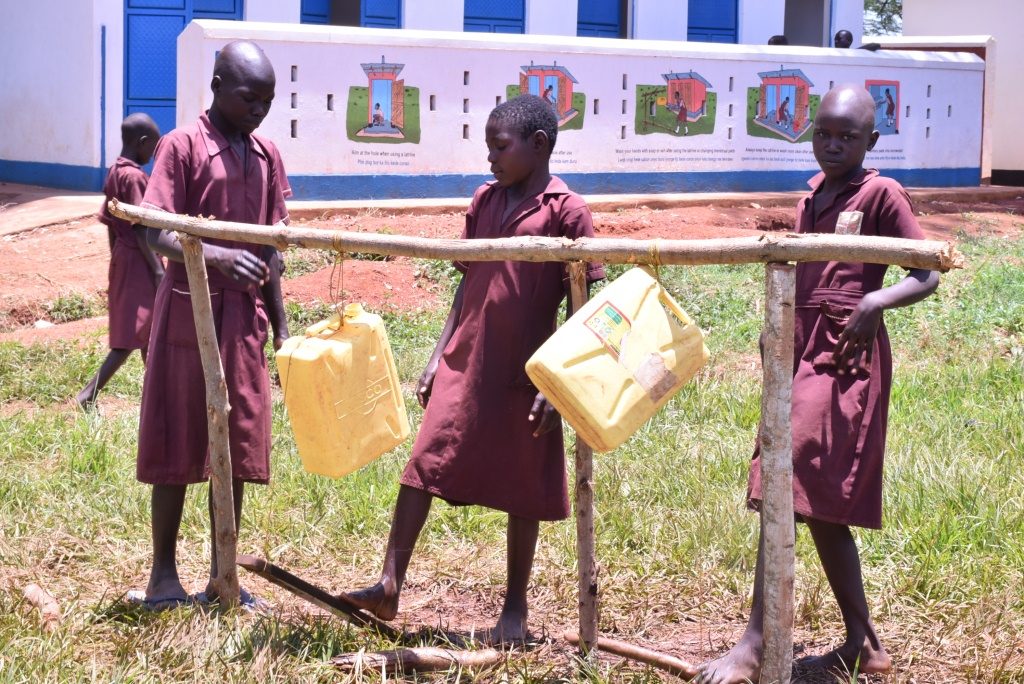When Nancy (name changed for privacy) got pregnant in 2015 her life turned into a nightmare. The 16 year old had dropped out from primary five at a school in Kamuli district because of poor menstrual hygiene management.
Nancy’s father became furious and disappointed in her on learning of her pregnancy though she had stopped attending school. “… My step-mother told my father to concentrate his energies on educating the boys saying I was soon to be married off because the education I had got so far was enough,” narrates Nancy now 18.
In distress Nancy says she searched for the boy who had impregnated her but he denied responsibility.
“While I had dropped out of school, for him he continued with his studies in a nearby secondary school as I suffered. I wished I had not cut short my studies to engage in early sexual activity,” says Nancy with a dejected face, while constantly shaking her head sideways probably recalling the hard times she went through.
Her father reluctantly approached the family of the boy for talks to resolve the matter. It was during these meetings that an agreement was reached where Nancy was to hand over the baby to the boy’s mother after delivery and enroll back for studies. This was after Nancy and the parents received counseling and guidance from Monica Naisaza, a Senior Woman Teacher at a Primary School in Kamuli who convinced her that she would be able to manage her menstrual hygiene while at school.
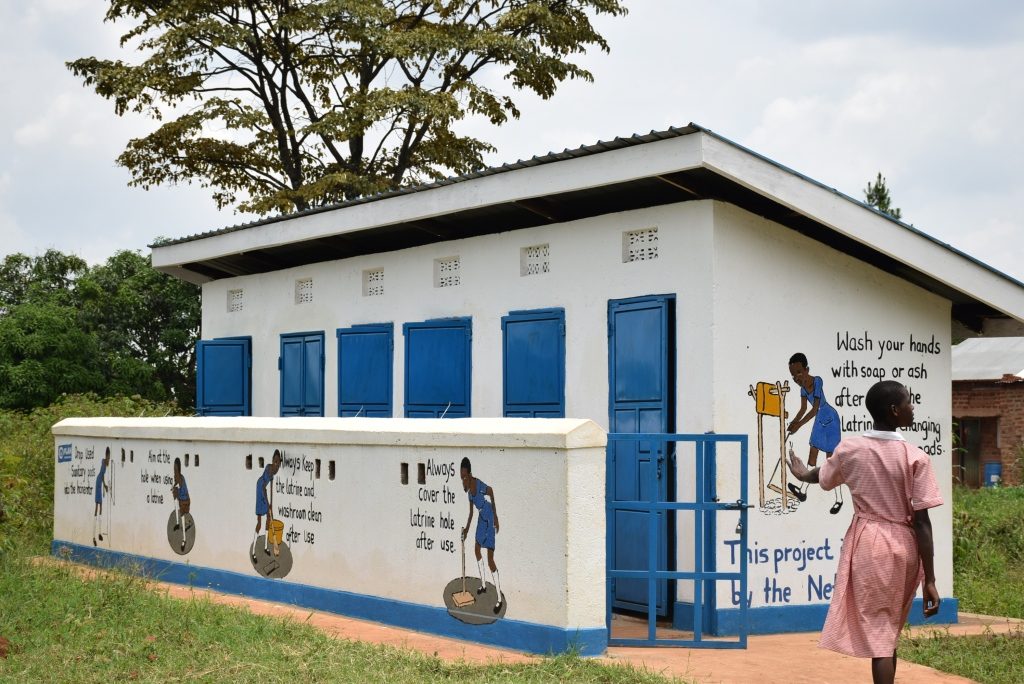
Nancy is now back to school, thanks to Plan International Uganda’s 4-year Equity for Equality in Education (EQE) project that targeted vulnerable and marginalised former Out of School Children (OOSC) like her to enroll, stay and complete school.
She is among the beneficiary pupils that the project in Kamuli and Lira districts has been able to integrate back to school in the 30 model schools where the project has been ongoing since 2014.
“I am very happy to be back in school to pursue my dreams. I now want to focus on becoming a teacher so that I can help young girls to avoid similar mistakes that I made,” she says, pointing out the importance of teachers and parents in encouraging instead of stigmatizing girls while in their menstrual periods and blaming girls who get pregnant in school.
As part of the project, teachers were trained and supported to sensitise community members about the importance of enrolling their children especially girls in school. Moreover, teachers were trained to create welcoming learning environment in schools to newly enrolled OOSC, including those who got pregnant or married early.
“Previously, we were not allowing girls who were pregnant to get back to school but because of the various trainings that Plan International Uganda has equipped us with as teachers, we now understand and accept these girls into classrooms. We are the only school around this village that is doing this. We have also counseled our pupils to understand and support such girls,” says Eronda Restetutor, a Head teacher in Kamuli District.
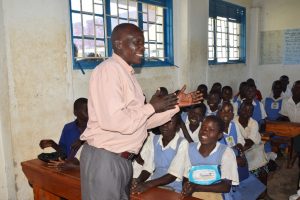
“Communities should encourage girls who have given birth to return to school. This project was very timely because as teachers we got the necessary skills through the Plan International Uganda EQE project and we were able to counsel and encourage many girls who had dropped out of school for various reasons to return,” Polly Agol Omara, the deputy head teacher at Ober primary school in Lira district says.
According to Joseph Kawubiri, the EQE project manager for Plan International Uganda, the project’s aim was to enroll 60,000 vulnerable, and marginalized children in rural and former conflict areas of Kamuli and Lira districts to access and complete quality, gender-sensitive basic education.
He gladly shared that by end of June 2017 the project successfully surpassed the target by more 8,000 pupils in the two districts that have been enrolled so far, which resulted in increasing the overall target for the project to 75,000 OOSC.
Kawubiri says the project provides a number of interventions to support OOSC, which include targeted enrollment campaigns, community sensitization and bursary support such as books, uniforms, pens and mathematical sets to the most vulnerable out of school children every beginning of the year as a way of attracting them back to school.
Below is a photo slide showing the project intervention in Kamuli and Lira Districts
Anthony Olweny, the EQE project facilitator for Kamuli, says Plan Uganda has also been able to train parents in 8 Sub Counties of Kamuli and Lira on financial management and income generation through Caregivers Savings and Loan’s Associations (CSLAs).
He says it was realised that some parents shun their responsibilities of providing basic needs for their children due to poverty and that’s why the project encourages them to join Caregivers Loans Saving Associations to get skills in managing finances and create more income for their families.
“They trained us on the importance of saving, and how to start and sustain income generating activities. I have gained a lot of knowledge in managing my finances. I now separate my savings from the profits which are used to support my grandchildren who are back in school,” Joyce Tizomu, a treasurer in one of Caregiver’s Savings and Loans Association in Kamuli District says.
Plan International Uganda has also been giving bursaries at the beginning of each school year to some of the most vulnerable OOSC to ensure their continued enrollment and retention in school. The bursary support is composed of uniforms, books, pens, pencils and mathematical sets.
The tabs below show videos of teachers and parents highlighting some of the activities that Plan International through the EQE project has been doing to motivate girls to stay and complete school. (Hoover around the names on top and click to watch the different video clips.)
- Mr. Opio
- Madam Polly
- Badagawa
- Increased Girls
Mr. Opio
Madam Polly
Badagawa
Increased Girls
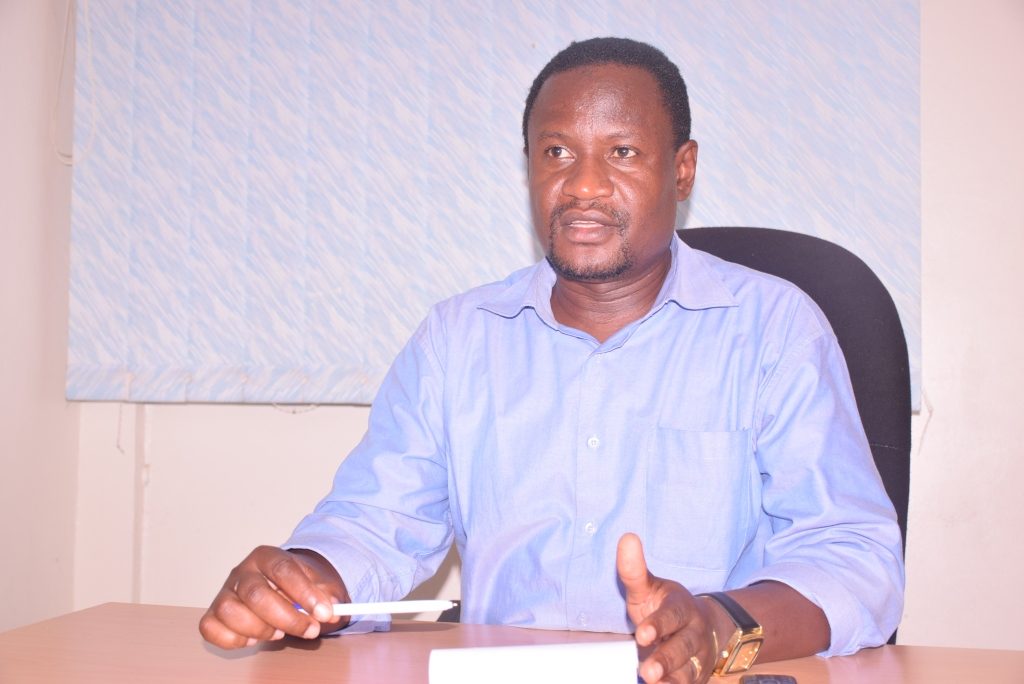
Kawubiri says the project has also been able to construct and rehabilitate 22 classroom blocks in the 30 model schools in the 2 districts, adding that all classrooms have already been equipped with desks and teachers’ chairs to allow for a conducive learning environment for the children that will enhance the quality of education, especially since the number of enrollees have increased significantly since the start of the project.
Supporting unique needs of girls
Through the project, Plan has been providing sanitary pads to girls encourage them to attend school regularly without fear of discrimination.
School girls and boys are trained on making local sanitary pads to enable girls better manage menstrual hygiene while at school and in the future. This has reduced girls’ absenteeism during their menstrual periods.
The video below is on sanitary pads. It also shows school girls demonstrating how to make local sanitary pads.
Hygiene promotion
Kawubiri says the project has also addressed issues of hygiene promotion in most of the model schools by constructing separate latrines for boys and girls. The ones for girls are built with changing rooms and incinerators.
The project also drilled boreholes in 10 model schools which provide access to clean water to nearby communities and school children, especially girls, who no longer have to miss classes during their menstrual period.
What education officers say about the project:
Abong Hellen Rose – Centre Coordinating Tutor Lira district.
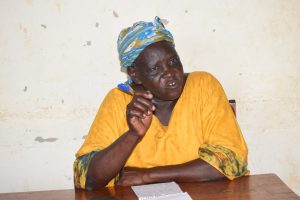
We train teachers to accept children who were not in school so that they can help them catch up with the regular learners.
In the community we still have challenges of mobilizing the male parents and guardians of the neglected children in attending meetings. With the introduction of the EQE project, we started receiving some fathers in our sensitization meetings more than before.
Thomas Badaza-District Inspector of Schools- Kamuli
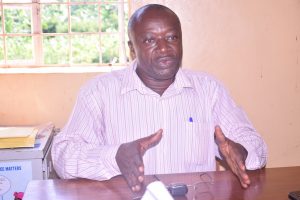
Involvement of parents in the education of their children has proved very important in this EQE project.
However, we need to continuously engage them beyond this project to ensure we maintain the good number that we have managed to enroll back to school.
Rev. Bosco Bonyo-District Inspector of Schools Lira
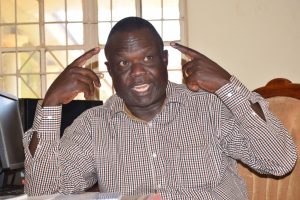
We increased and improved learning space in some schools which were in a bad state. Some schools were highly populated with dilapidated classrooms. These were identified and supported.
Before the EQE project, our desk ratio was 12 to 1 desk with a host sitting on the floor.
With our collaboration showing the gaps as a district, the ratio improved from 5 to 1 desk. In this ratio, it shows while the desk is meant to sit 4 children, only one is missing. To us this is a very tremendous step in our education needs as a district.
The success of the project which is evidenced by a higher enrollment of girls than that of boys in some of the model schools motivated many pupils, parents, and teachers with promising hope that early pregnancy is not the end of one’s education.
- Keeping Children Alive
- Challenges of WASH at Schools
- Ministry's Role
Keeping Children Alive
WASH IN SCHOOLS by The Campus Times on Scribd
Challenges of WASH at Schools
Ministry's Role
The interventions should not only end at primary level but should also continue at secondary level. Girls face similar challenges as they join secondary schools. Figures from the ministry of education from a few selected schools indicate that the number of students who enroll in senior one keep dropping as year by year as as the education level increases as shown in the table below:
| Year | Gender | S.1 | S.2 | S.3 | S.4 |
|
2007 |
Male | 11,190 | |||
| Female | 8,922 | ||||
| Total | 20,112 | ||||
|
2008 |
Male | 11,291 | 10,717 | ||
| Female | 9,251 | 8,545 | |||
| Total | 20,542 | 19,262 | |||
|
2009 |
Male | 9,884 | 10,500 | 9,659 | |
| Female | 8,333 | 8,382 | 7,714 | ||
| Total | 18,217 | 18,882 | 17,373 | ||
|
2010 |
Male | 11,344 | 9,137 | 9,272 | 8,485 |
| Female | 10,094 | 7,563 | 7,585 | 6,373 | |
| Total | 21,438 | 16,700 | 16,857 | 14,858 | |
|
2011 |
Male | 12,202 | 11,101 | 8,733 | 8,444 |
| Female | 10,896 | 9,648 | 7,530 | 6,493 | |
| Total | 23,098 | 20,749 | 16,263 | 14,937 | |
|
2012 |
Male | 11,139 | 10,871 | 9,738 | 7,800 |
| Female | 9,827 | 9,458 | 8,261 | 6,007 |
The graph below shows the drop out rate of girls over a period of 4 years (2007-2012).




